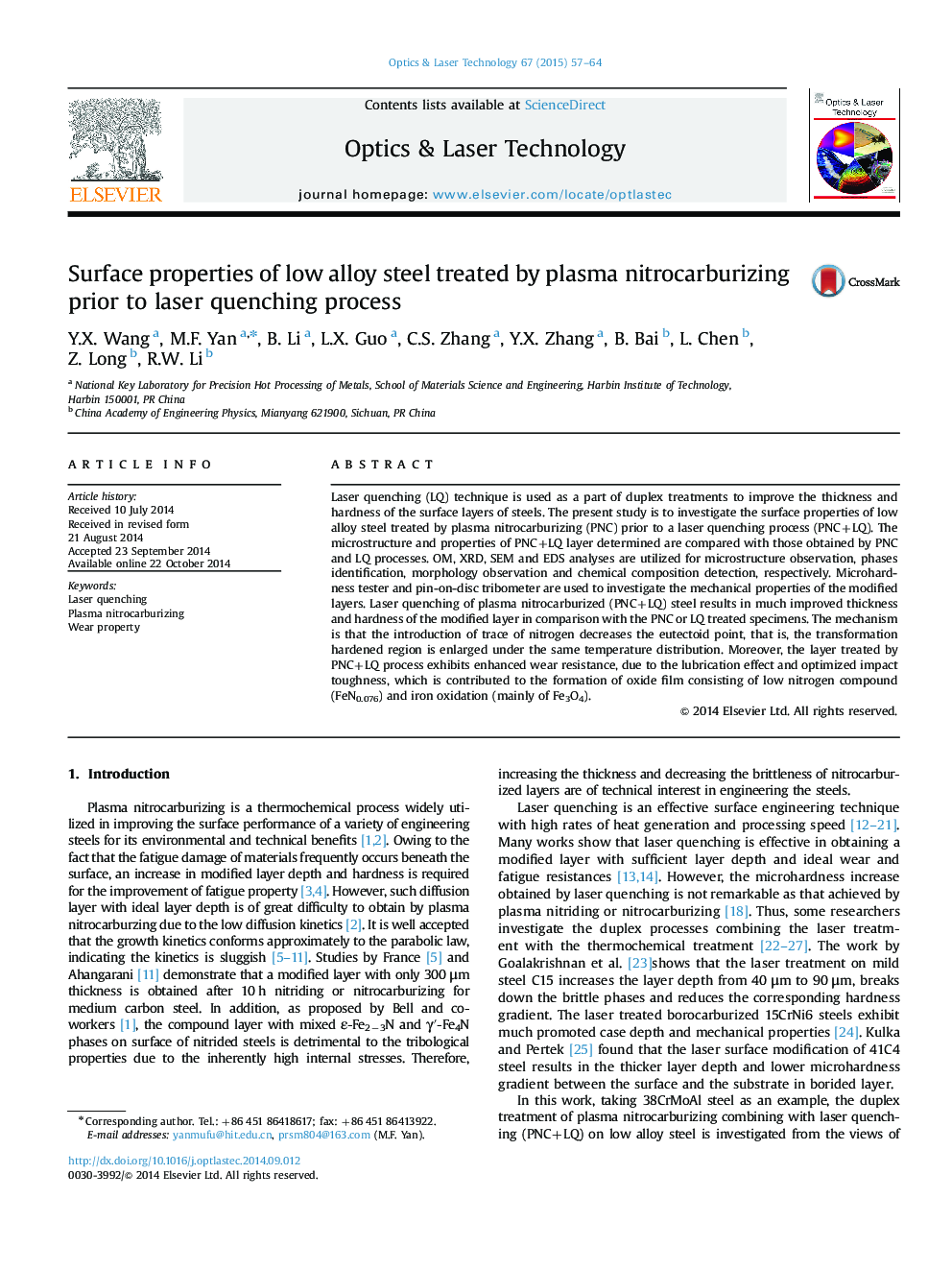| کد مقاله | کد نشریه | سال انتشار | مقاله انگلیسی | نسخه تمام متن |
|---|---|---|---|---|
| 733323 | 1461631 | 2015 | 8 صفحه PDF | دانلود رایگان |
• The effect of laser quenching on plasma nitrocarbrized low alloy steel is studied in this paper.
• The duplex treatment results in thicker layer depth than nitrocarburizing/laser quenching.
• The increase in case depth is result from the eutectoid point reduction due to introduction of N.
• Post-laser quenching cause the brittle phase decomposed and the hardness redistributed.
• The duplex treated specimen shows better wear resistance than the nitrocarburzied counterpart.
Laser quenching (LQ) technique is used as a part of duplex treatments to improve the thickness and hardness of the surface layers of steels. The present study is to investigate the surface properties of low alloy steel treated by plasma nitrocarburizing (PNC) prior to a laser quenching process (PNC+LQ). The microstructure and properties of PNC+LQ layer determined are compared with those obtained by PNC and LQ processes. OM, XRD, SEM and EDS analyses are utilized for microstructure observation, phases identification, morphology observation and chemical composition detection, respectively. Microhardness tester and pin-on-disc tribometer are used to investigate the mechanical properties of the modified layers. Laser quenching of plasma nitrocarburized (PNC+LQ) steel results in much improved thickness and hardness of the modified layer in comparison with the PNC or LQ treated specimens. The mechanism is that the introduction of trace of nitrogen decreases the eutectoid point, that is, the transformation hardened region is enlarged under the same temperature distribution. Moreover, the layer treated by PNC+LQ process exhibits enhanced wear resistance, due to the lubrication effect and optimized impact toughness, which is contributed to the formation of oxide film consisting of low nitrogen compound (FeN0.076) and iron oxidation (mainly of Fe3O4).
Journal: Optics & Laser Technology - Volume 67, April 2015, Pages 57–64
